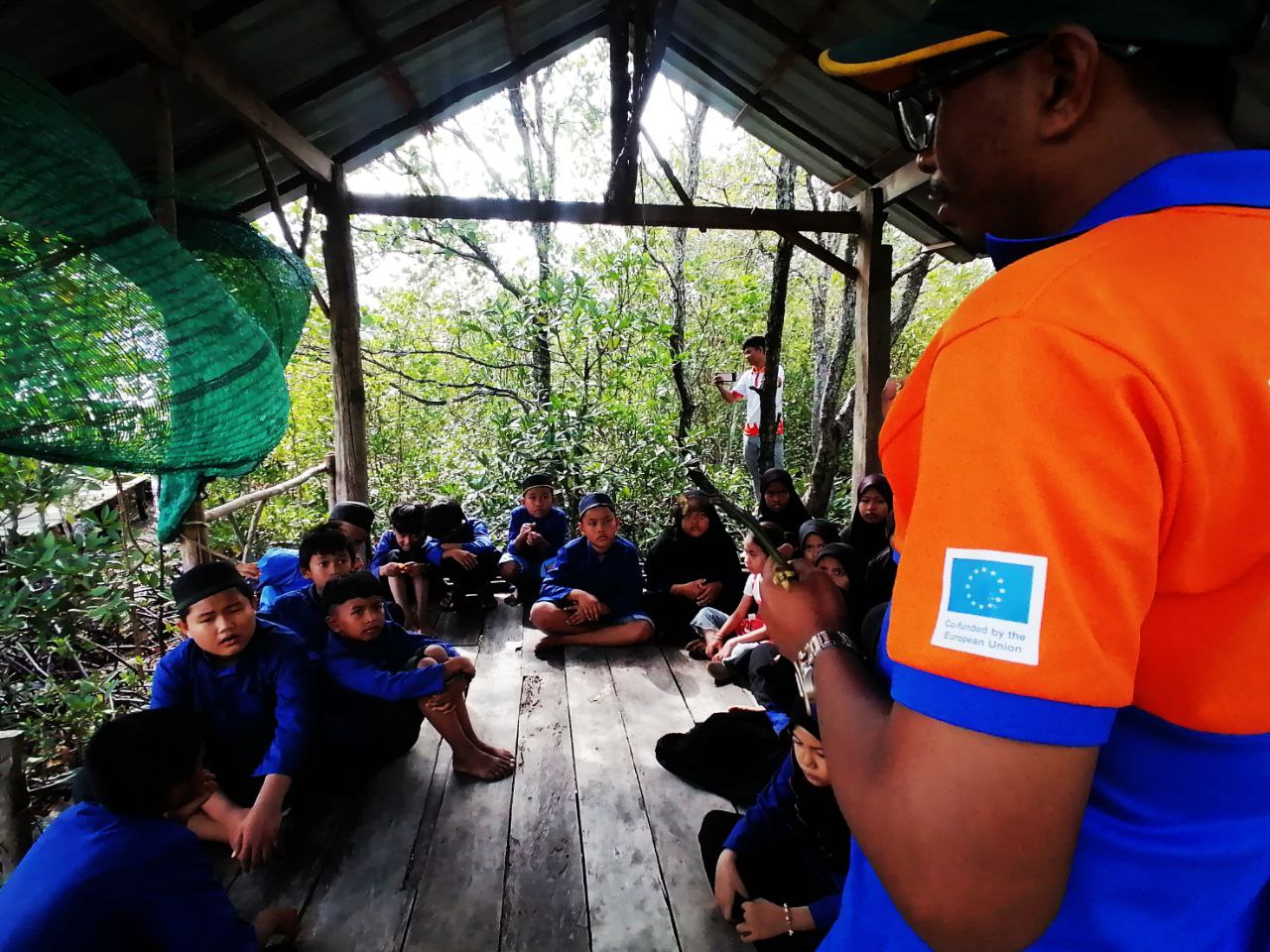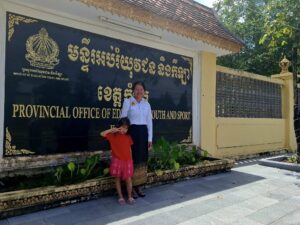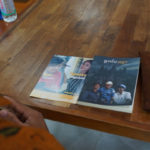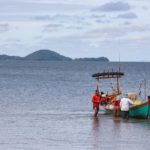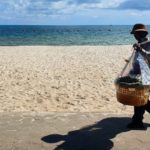Ahead of the International Day for the Conservation of the Mangrove Ecosystem on 26 July 2024, Action Education/Aide et Action (AEA) Cambodia underlines the role of environmental education as a powerful tool to address the climate crisis.
When children grow environmentally conscious, they are empowered to make a difference. Children’s games in the mangroves are about protecting ecosystems that provide food and income for local communities. Students from Sbov Primary School, aged 8 to 12, were laughing and running on the wooden footbridge across Kep’s thick mangrove jungle. These little heroes were determined to rescue wildlife by searching for and planting seeds in the “nursery for baby mangroves.” At the end of the day, each child was given a cob corn to celebrate their collective win in the fight against climate change.
When schools engage in tree-planting, it is more than just a playful and educative activity between land and sea. It allows students to directly implement community-based mangrove reforestation. Furthermore, a day out of the classroom provides an excellent opportunity for children to explore the outdoors, collaborate with others, and be mindful of the environment’s needs. Furthermore, they gain from spending time in green settings in terms of mental, physical, and social development. In the long term, they are educated to continue to promote the protection of coastal ecosystems as adults. They are, thus, important change-makers, spreading the message that we must all work together to protect and nurture mangrove forests.
Mangroves serve an important role in keeping ecosystems healthy, providing numerous benefits to biodiversity and coastal communities. In brief, mangrove forests act as a natural barrier to floods during storms, protect coasts from powerful waves, slow soil erosion, filter water, absorb and store CO2, and therefore reduce air pollution while producing fresh air. According to UNESCO, one hectare of mangrove can store 3,754 tons of carbon, which is the equivalent of taking more than 2,650 cars off the road for one year. [1]
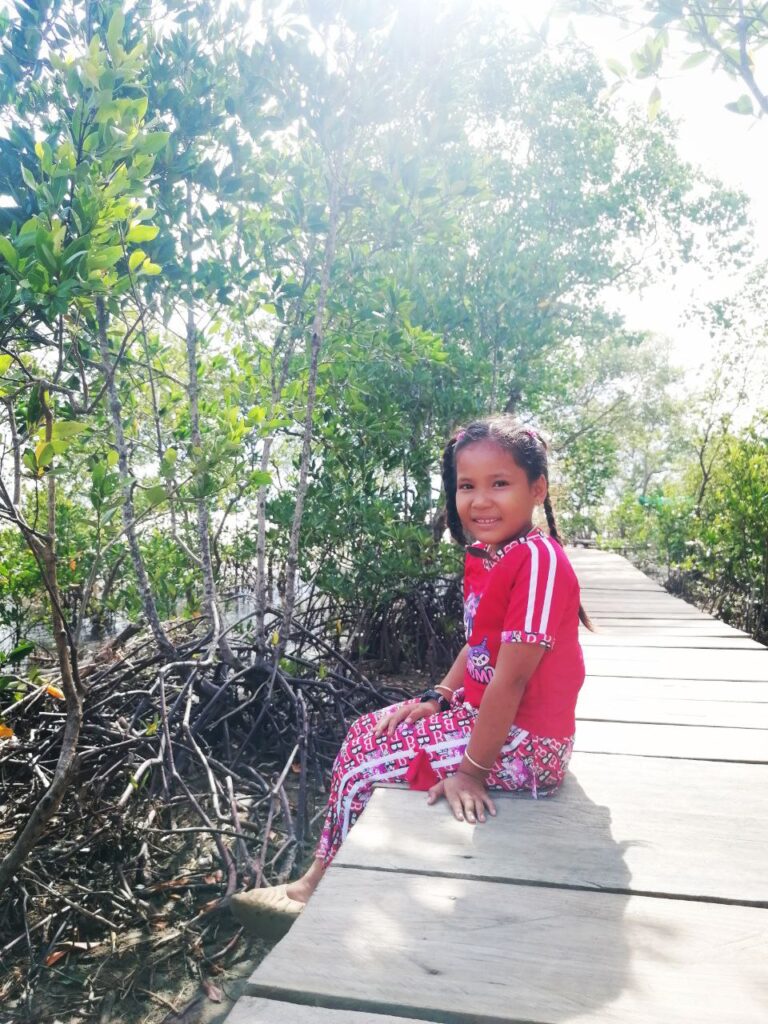
Mangroves also provide habitat for a variety of animals, including the hairy-nosed otter, Asia’s rarest otter that is in danger of extinction. A survey discovered that Cambodian mangrove forests were home to over 700 animal species, including birds, fish, crabs, and fishing cats. [2]
Nonetheless, coastal forest ecosystems are among the world’s most endangered natural environments for a range of causes, including building, mass tourism, sand mining, and agriculture. Mangroves are particularly vulnerable to global warming-induced sea levels rise. According to UNESCO, they are disappearing three to five times faster than overall world forest losses, and mangrove coverage has been reduced by two in the last 40 years. [3] Cambodia is no exception. The four coastal provinces of Koh Kong, Kampot, Preah Sihanoukville, and Kep lost an estimated 42% of their mangrove forests between 1989 and 2017. [4]
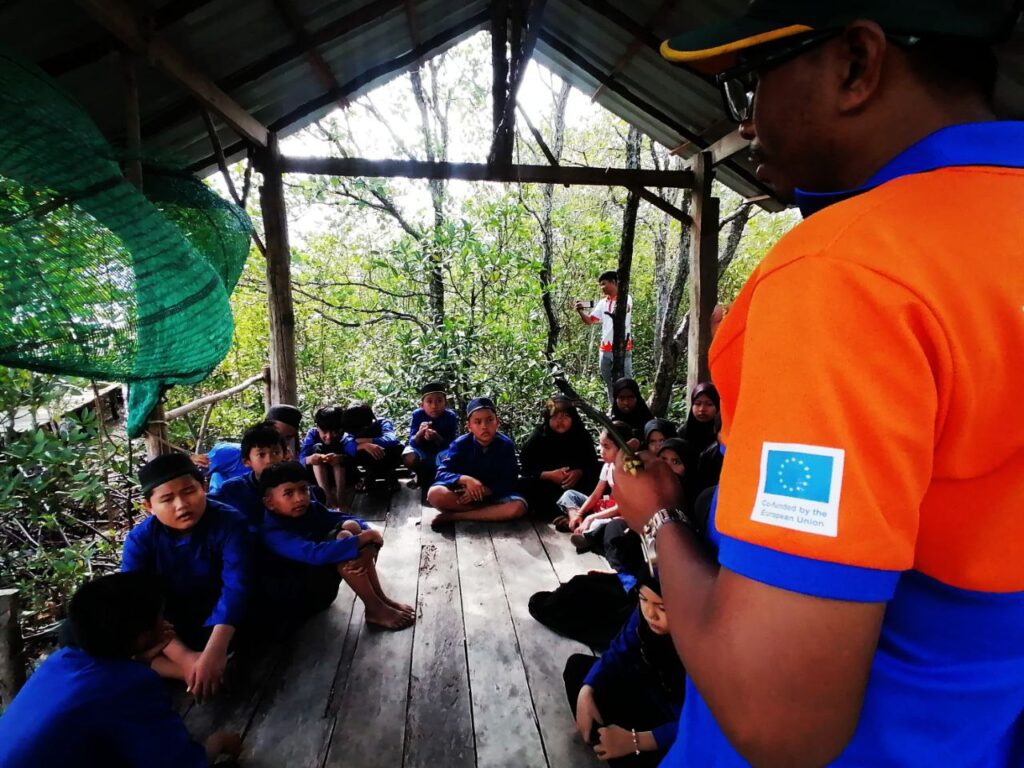
This is why AEA’s CO-SAVED project, co-funded by the EU, is stepping up efforts to offset the widespread mangrove destruction. Activities are intended to increase forest coverage and to protect marine resources by supporting fishing communities, schools, and local governments with their own projects and initiatives. Beyond children’s education and the vital need to preserve old-growth mangrove forests, there are economic benefits to conserving mangroves.
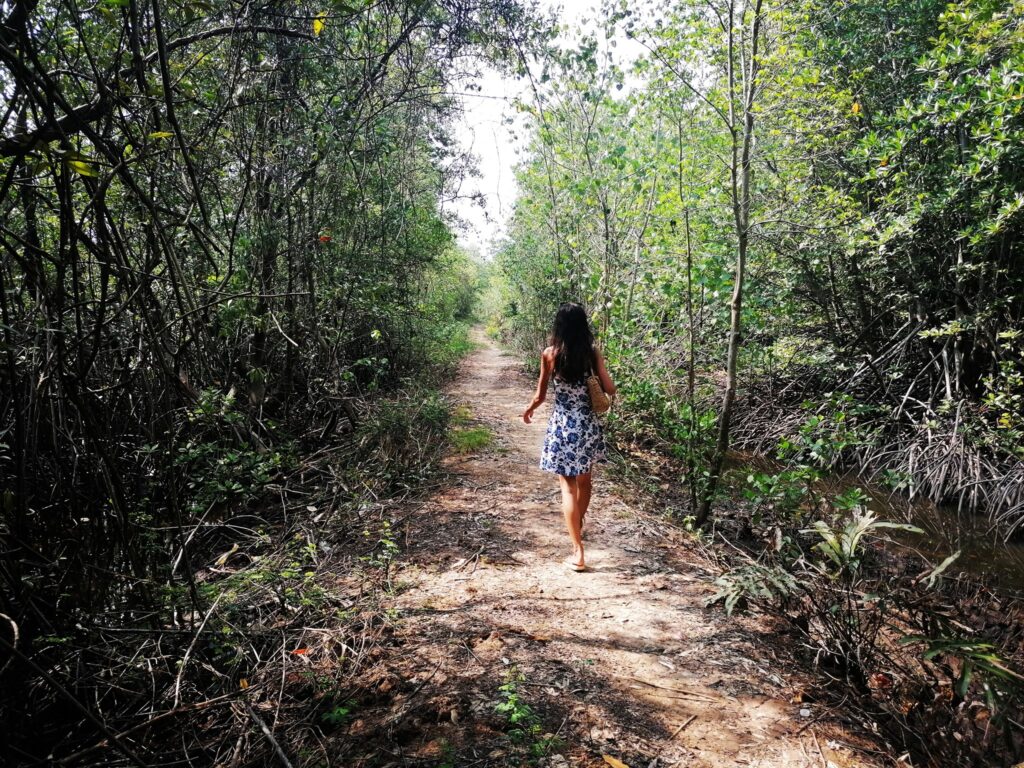
The children from Sbov Primary School were playing in an iconic forest in Kep. It is a valuable ecological location that attracts both domestic and foreign tourists. Because the forest is mostly made up of tangled roots and mud, there are wooden paths for walkers and strollers to experience a cooler microclimate in tropical latitudes, which is especially enjoyable in the hot season. Away from the crowds of tourists, the wooden path lead travelers through the think jungle to the ocean.
Huts and hammocks along the wooden path provide peaceful spaces for visitors to connect with nature in silence or discuss and learn from their local eco-tourist guide. If any green tourist or responsible citizen wants to learn about mangroves and participate in planting efforts, community members are eager to welcome them. They genuinely advocate for action and encourage biodiversity along Cambodia’s coastline.
Sources:
[1] UNESCO (2023) International Day for the Conservation of the Mangrove Ecosystem,
[2] WORLD ECONOMIC FORUM (2024) Cambodian mangroves home to more than 700 wildlife species, a new survey finds, on 30 April
[3] UNESCO (2023) International Day for the Conservation of the Mangrove Ecosystem,
[4] VEETIL, B. K. and QUANG, N. X. (2019) Mangrove forests of Cambodia: Recent changes and future threats, in Ocean & Coastal Management, Vol. 181, https://doi.org/10.1016/j.ocecoaman.2019.104895



